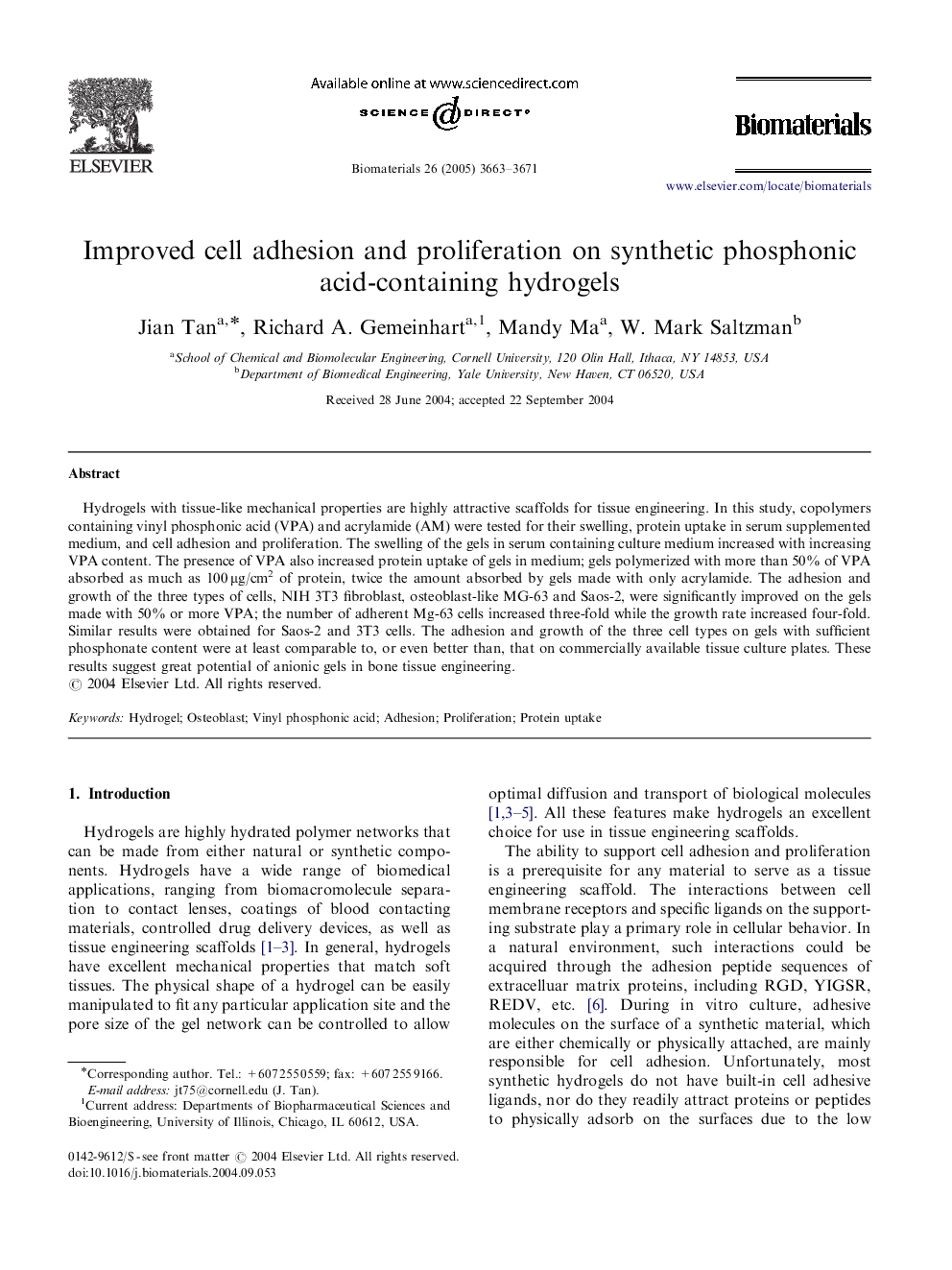| Article ID | Journal | Published Year | Pages | File Type |
|---|---|---|---|---|
| 12747 | Biomaterials | 2005 | 9 Pages |
Hydrogels with tissue-like mechanical properties are highly attractive scaffolds for tissue engineering. In this study, copolymers containing vinyl phosphonic acid (VPA) and acrylamide (AM) were tested for their swelling, protein uptake in serum supplemented medium, and cell adhesion and proliferation. The swelling of the gels in serum containing culture medium increased with increasing VPA content. The presence of VPA also increased protein uptake of gels in medium; gels polymerized with more than 50% of VPA absorbed as much as 100 μg/cm2 of protein, twice the amount absorbed by gels made with only acrylamide. The adhesion and growth of the three types of cells, NIH 3T3 fibroblast, osteoblast-like MG-63 and Saos-2, were significantly improved on the gels made with 50% or more VPA; the number of adherent Mg-63 cells increased three-fold while the growth rate increased four-fold. Similar results were obtained for Saos-2 and 3T3 cells. The adhesion and growth of the three cell types on gels with sufficient phosphonate content were at least comparable to, or even better than, that on commercially available tissue culture plates. These results suggest great potential of anionic gels in bone tissue engineering.
